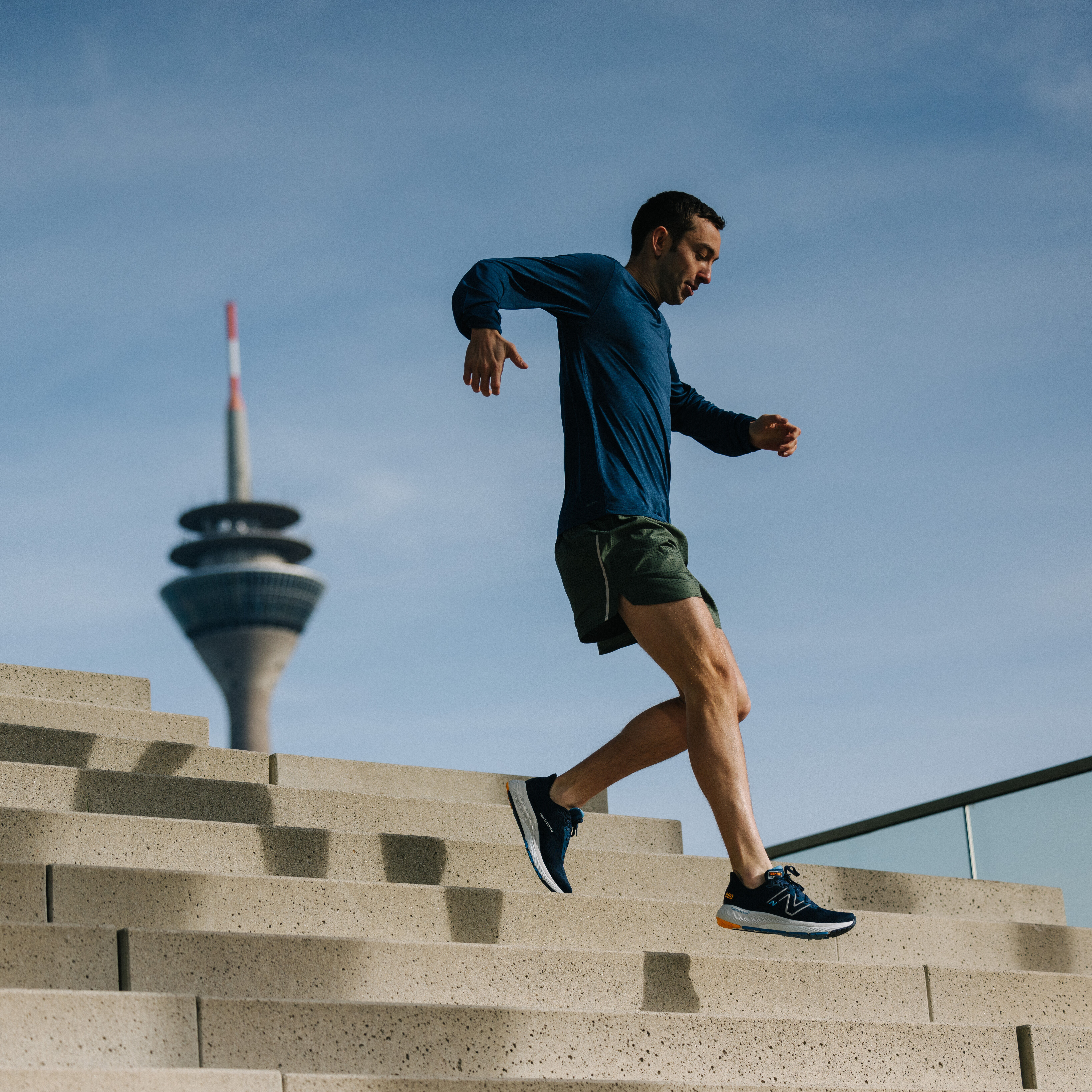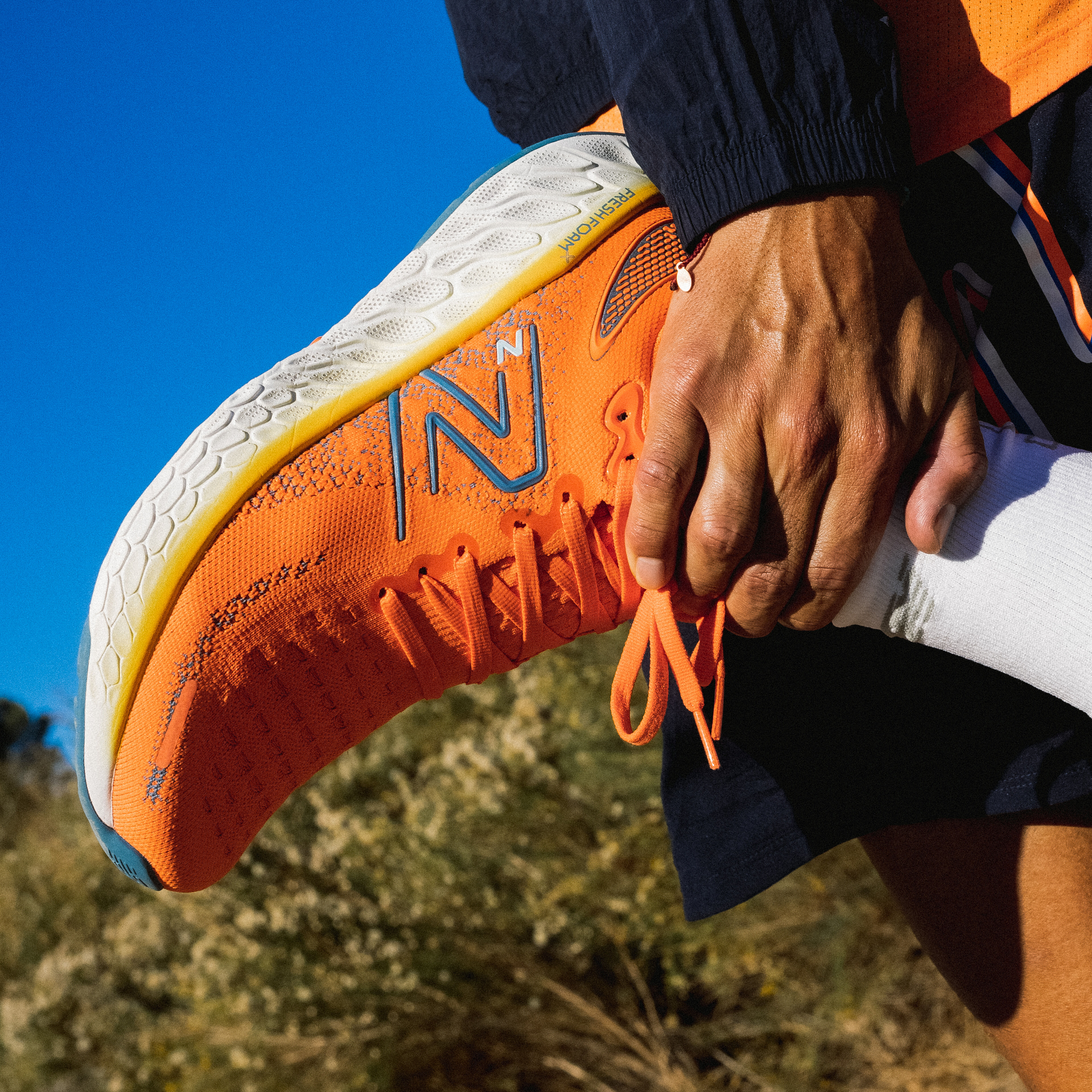
What is pronation?
Pronation is all about how a walker’s or runner’s foot rolls when it makes contact with the ground. This natural motion is something we all experience, but that doesn’t mean we all do it the same way. Because of this, there are several types of pronation, each of which affects your gait and running style in different ways. Let’s take a look.
Are you an overpronator, underpronator or neutral pronator?
When running, you’ll follow one of the forms of pronation listed here:
• Overpronation: Overpronation occurs when your ankle rolls too far inwards and downwards as you step. Yourfoot lands on the outside of your heel, causing your ankle to drop towards the
ground and putting additional stress on your big and second toes.
• Underpronation: Also known as ‘supination’, underpronation occurs when there isn’t enough of an inward roll when the foot strikes the floor. In this instance, your foot lands on the outside of your heel, sending the shock of impact upwards and through your lower leg. Underpronation also puts extra strain on your smaller toes at the outside of your foot.
• Neutral pronation: In a perfect world, everybody would be a neutral pronator! Neutral pronation means your feet and ankle align perfectly when you run or walk. Your foot lands and then pronates to evenly absorb the shock of impact, before pushing steadily off from the front of the foot.
What causes underpronation and overpronation?
There are a number of reasons as to why your feet might underpronate or overpronate. For many people, it’s a question of genetics – you’re simply born that way. It could also be that you develop one of these conditions as a result of a previous foot, leg, or ankle injury, or damage to your Achilles tendon. High impact sports such as football or tennis have been known to contribute, and age can also be a factor.
Does pronation matter?
Yes, pronation does matter, especially if you have one of the conditions mentioned above. Without the right support from your running shoes, you put yourself at risk of a number of potential injuries.
• Overpronation injuries include:
- Shin splints: a painful tenderness down the front of your leg, which can sometimes last for a number of weeks
- Plantar fasciitis: an inflammation of the tissue fibres that run along the bottom of your foot, causing severe pain in your heel
- Heel spurs: a calcium deposit or a bony growth on your heel bone, which can cause heel pain
- Bunions: painful bony lumps that form on the outside of your feet, usually below your big toes.
• Underpronation injuries include:
- Sprained ankle: a stretch or tear of the ankle ligaments, leading to painful bruising or swelling, along with a restriction of movement and instability
- Shin splints and plantar fasciitis, as mentioned above. Although neutral pronators are less likely to suffer from the injuries we’ve mentioned, it doesn’t mean that they’re immune from foot, ankle or leg injuries. They should choose their running shoes just as wisely as anyone else.
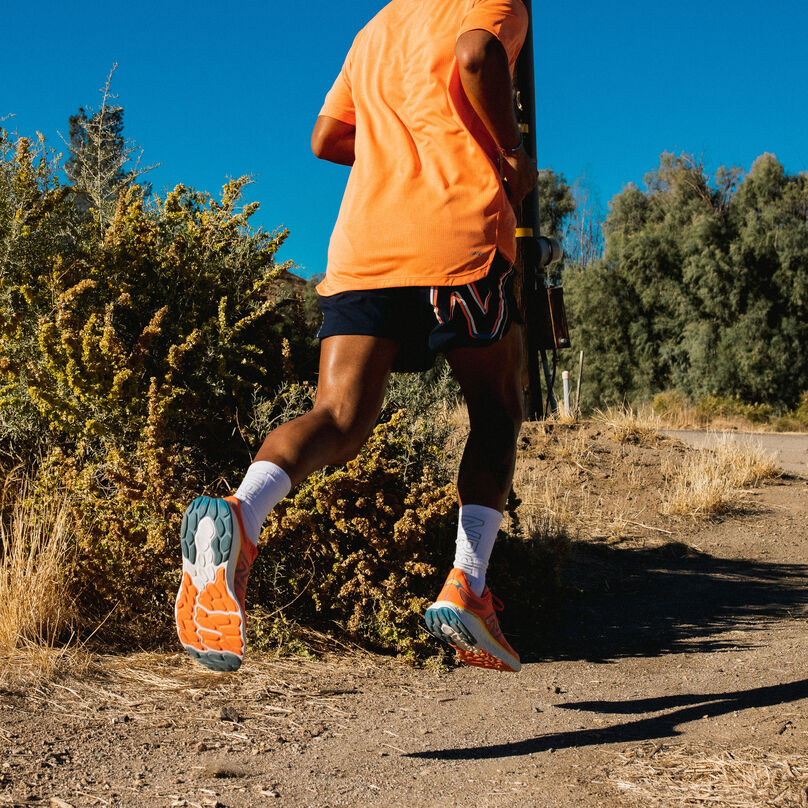
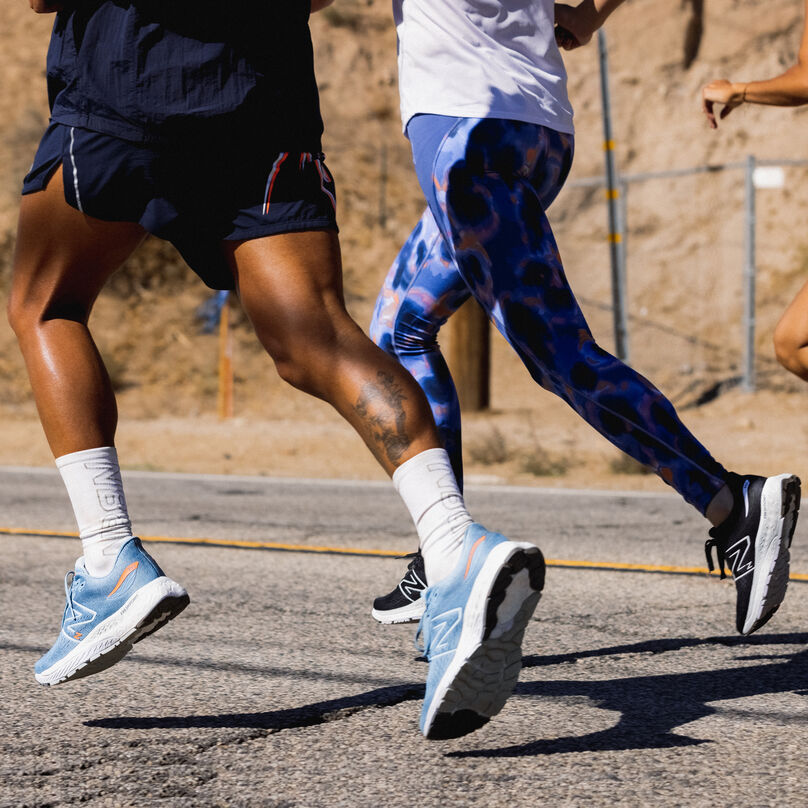
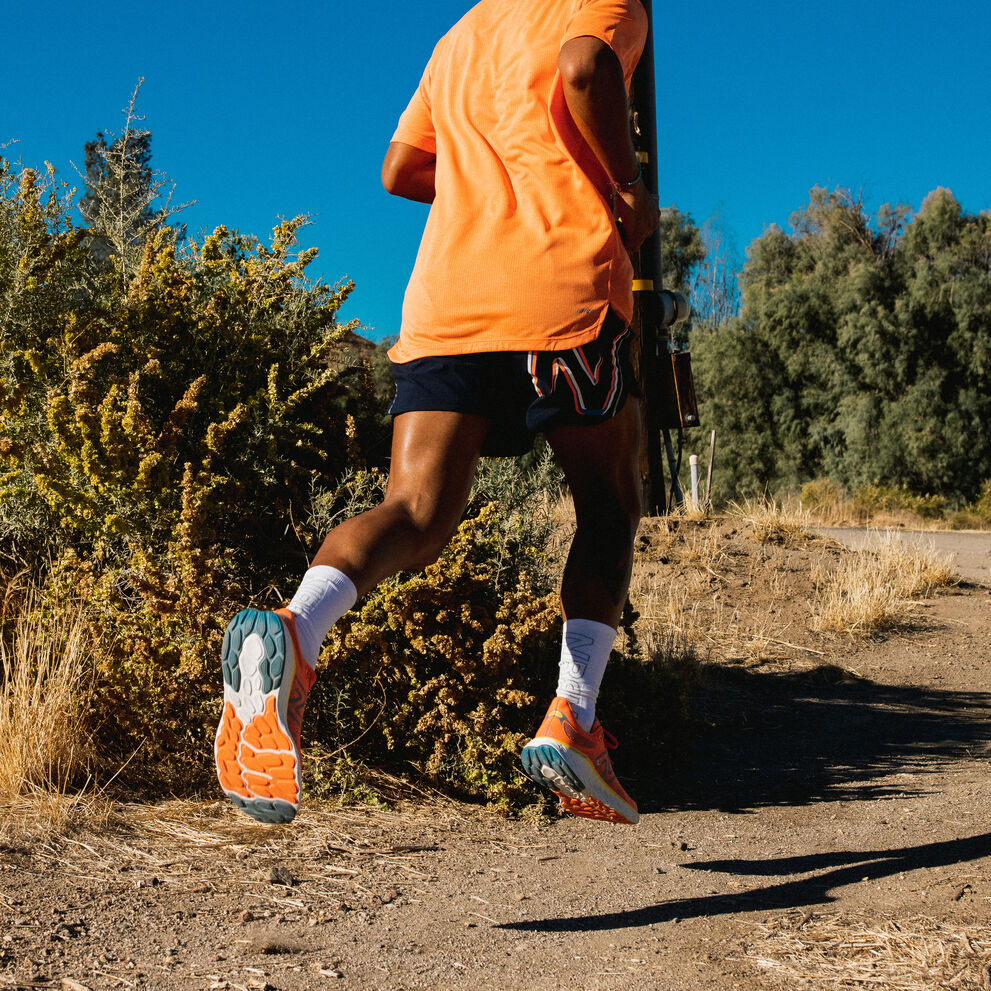
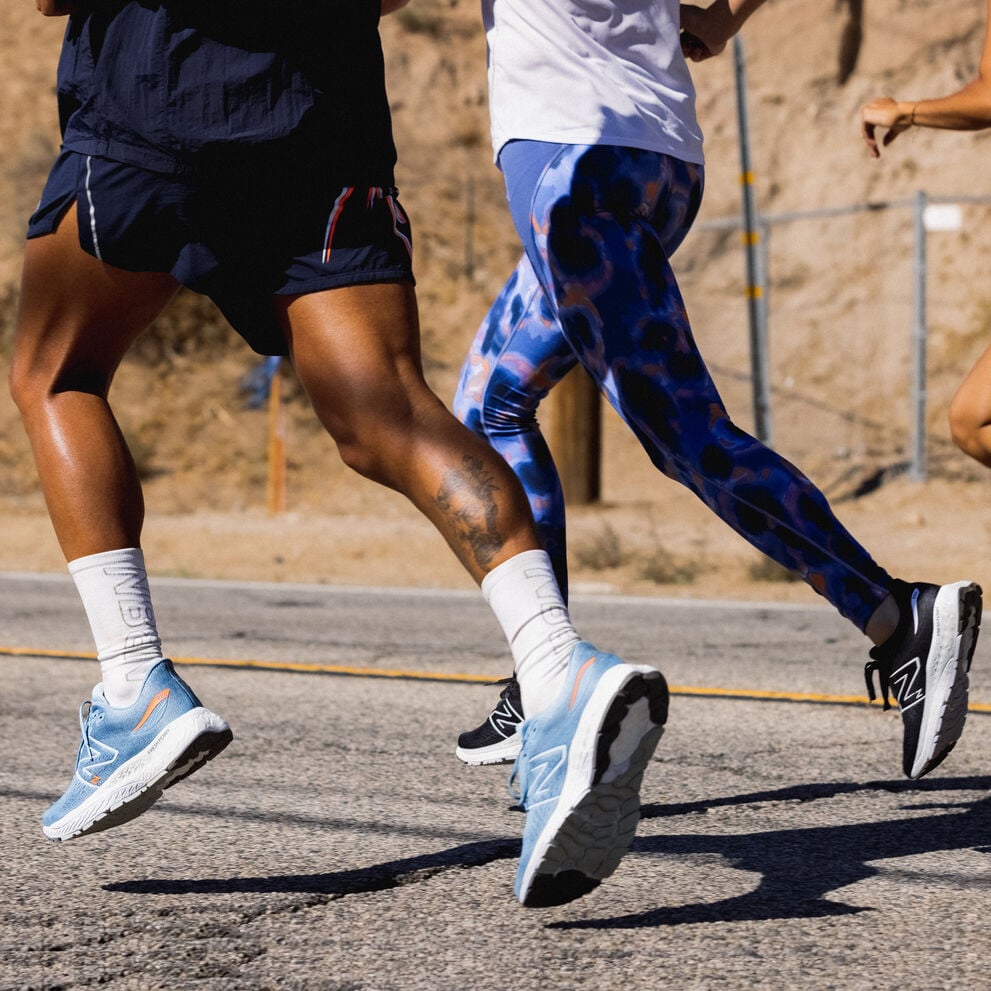
Best shoes for running pronation
To support your pronation and help you to avoid pain or injury, tracking down the right shoes is vital. Good pronation running shoes can make a huge difference to your gait, and your running success as a result. When popping in to stock up on shoes or running accessories you’ll also find that many running shops will have the facilities to carry out gait analysis, which enables staff there to identify how your feet pronate. If not however, you can easily check
yourself by looking at a pair of your worn shoes, and seeing where exactly the sole has worn down most.
If the area of wear is mostly on the outside edge of your sole, you tend to underpronate.
If the area of wear is mostly around your big toe, inside of your heel and under the ball of your foot, then you tend to overpronate.
Overpronation running shoes
If you overpronate, the best running shoes for you are those that provide improved levels of stability and support to keep your ankles from rolling inwards. The New Balance 880 running shoes range is designed with high
performance and support in mind, with an NDurance rubber outsole for improved durability.
Underpronation running shoes
For those of you who underpronate, your best bet is to grab a pair of running shoes with high levels of cushioning to efficiently absorb the extra shock. This in turn will enable your foot to pronate more neutrally. The New Balance 1080v12 – for men – for women is perfect for underpronating runners thanks to the super-responsive and supportively cushioned FreshFoam midsole, delivering more foam to the wider areas of your foot. Increased flexibility at the
narrower points of your foot also help to make these some of the best running shoes for underpronation.
So whether it’s under, over or neutral for you, the fact is that we’re all pronators in one way or another. But that needn’t be a pain, and it needn’t be a hindrance either. Like most things to do with running, it’s all about finding the right shoe and getting going.

-square.jpg)

